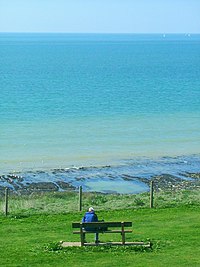
Photo from wikipedia
OBJECTIVES Given the profoundly negative impact of inactivity on public health, it is important to have valid and reliable measures of lifestyle physical activity (LPA). The Brunel Lifestyle Physical Activity… Click to show full abstract
OBJECTIVES Given the profoundly negative impact of inactivity on public health, it is important to have valid and reliable measures of lifestyle physical activity (LPA). The Brunel Lifestyle Physical Activity Questionnaire (BLPAQ) was designed to measure planned physical activity (PPA) and unplanned physical activity (UPA). The objective of the present study was to assess the criterion-related validity of the BLPAQ. DESIGN A correlational design was employed. METHODS A sample of British leisure centre users (N=356; age range 18-69 y: mean age 26.5±10.4 y) completed the BLPAQ and two reference measures: the Baecke Questionnaire of Habitual Physical Activity (BQHPA) and the Godin's Leisure-Time Exercise Questionnaire (GLTEQ). MANOVA was used to test for gender differences in LPA. Each measure was also cross-validated using a split-sample approach and the limits of agreement (LoA) method. RESULTS With the exception of the Moderate and Vigorous dimensions of the GLTEQ in the case of UPA, the remaining scores of the reference instruments were correlated with both PPA and UPA factors (p<0.05). A significant difference in levels of UPA was found between women and men (p=0.039). Furthermore, multiple linear regression analyses demonstrated that the BLPAQ subscales could be predicted by the criterion measures. The LoA analyses demonstrated satisfactory agreement between BLPAQ subscales and those of the BQHPA and GLTEQ. CONCLUSIONS The BLPAQ is a criterion- and cross-validated measure of PPA and UPA that can be used to assess the efficacy of LPA interventions by researchers and practitioners.
Journal Title: Journal of science and medicine in sport
Year Published: 2017
Link to full text (if available)
Share on Social Media: Sign Up to like & get
recommendations!